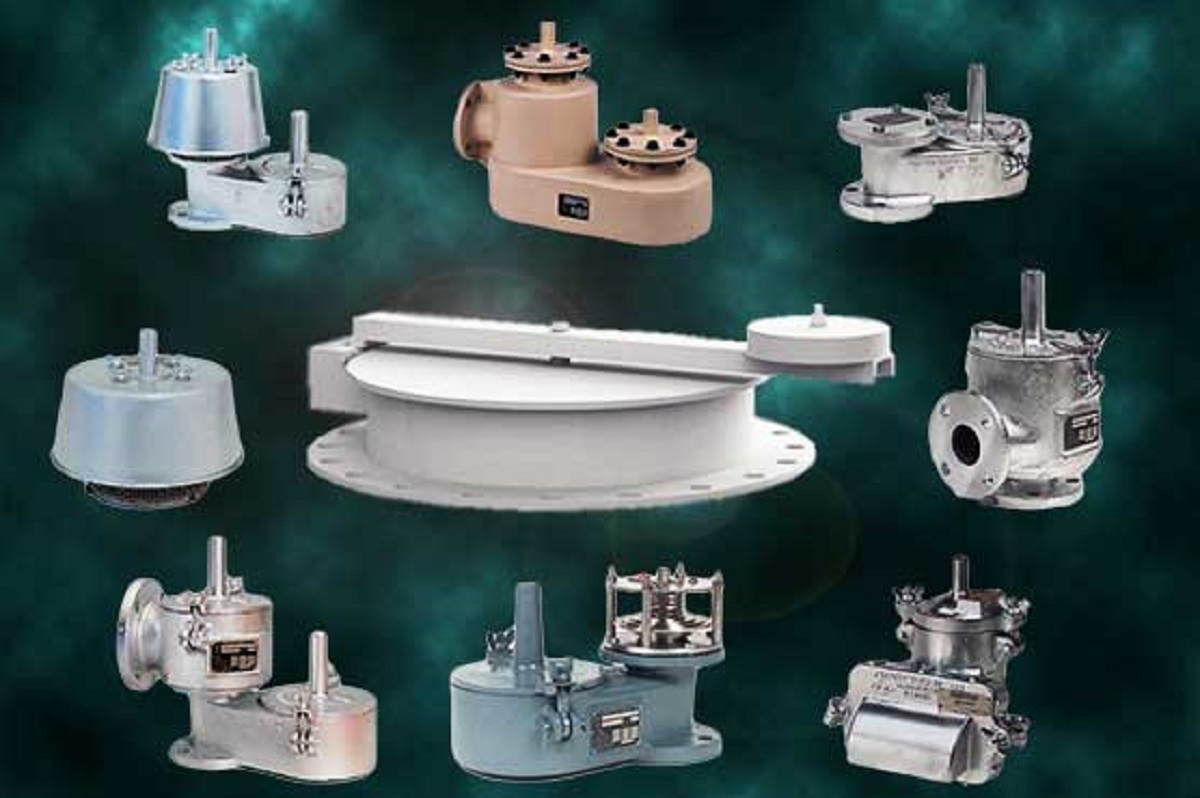The protection of safety remains essential to high-pressure facilities including chemical plants as well as oil rigs and pharmaceutical manufacturing facilities. Safety installations and the prevention of devastating incidents heavily depend on emergency vent systems. Emergency systems serve three vital functions by safeguarding equipment as well as people and environmental integrity against overpressure events or vacuum incidents. The guide presents information on emergency vent systems including their importance to processes and design concepts and selection requirements.
What Are Emergency Vents?
Emergency vents are a kind of safety device meant for relieving excess pressure or vacuum. They operate mainly in systems such as tanks, pressure vessels, and pipelines. They act by preventing catastrophic failure of equipment by allowing pressure to be vented or vacuumed before dangerous conditions arise. These exist only for extreme pressures; conversely, regular vents may only consider minor variations. Emergency vents exist to avert very hazardous episodes due to excessive pressure surges.
How Do Emergency Vents Work?
Emergency vent operations are pretty simple:
Pressure Buildup
Emergency vent acts in the case of overpressure or vacuum conditions. Thereupon, once the pressure exceeds or falls below a threshold value, it is activated.
Pressure Relief
At the set threshold, excess pressure is released through the vent or air is allowed to enter the system in order to balance any developing vacuum and prevent damage to the equipment.
Return to Normal Conditions
When either pressure or vacuum returns to the set value, the system ceases to vent, thus stabilizing the system against further pressure excursions, maintaining the integrity of the entire system.
Classes of Emergency Vents
Pressure Relief Valves (PRVs)
How They Work: These valves open when the internal pressure exceeds a certain limit to release the pressure so that system failure can be avoided.
Suitable For: Systems where precise control over pressure relief is needed, i.e., tanks and reactors.
Which Is Rupture Discs and How Do They Work
These are one-time-use devices designed to rupture when a specific pressure is reached; allow the excess pressure to be released from the system.
Best For: Critical industries such as chemicals and pharmaceuticals that require very rapid, reliable release of pressure.
Vacuum Reliefs: Allow air to enter a vacuum condition in the system to avoid tank collapse or damage due to vacuum conditions.
Best For: Tanks and vessels where a volatile might create a vacuum due to emptying or changing temperature.
Combination Vents-how do they work? It provides pressure and vacuum protection in one package. More appropriate for complex systems suffering from both types of conditions, such as large-scale chemical manufacture.
Applications of Emergency Vents
Emergencies are found across industries for high-risk equipment and human safety from the event of overpressure or vacuum conditions: Chemical and Petrochemical Industries
That protects reactors, pressure vessels, and pipelines from catastrophic overpressures associated with some chemical reactions or equipment failure.
Applications: Oil & Gas Sector Protects tanks, pipeline systems, and offshore platforms against dangerous building pressures avoiding explosions or spills.
Production of Pharmaceuticals Provides safety for high-pressure systems processing drugs while protecting sensitive equipment from costly downtime.
Food & Beverage Keep pressure vessels and systems used in production from fluctuation while at the same time protecting the equipment as well as the quality of the product.
Benefits of Emergency Vents
Several key advantages result from having emergency vents in an industrial system: Prevention of Catastrophic Accidents Evacuation of Emergency Vents reduces dangerous explosions or equipment failures due to abnormal overpressure or vacuum conditions within the system itself, making the entire environment much safer for personnel and property.
Compliance Assurance
Most industries are legally required to implement emergency venting systems with safety standards. The very act of using these venting systems goes a long way in supporting regulatory compliance and hence avoiding fines or shutdowns.
Cut Down on Maintenance Costs
Emergency vents prevent any subsequent damage to the system and, in turn, mitigate costs in repairs or replacements.
Improve Operational Efficiency
The design of emergency vent systems is such that they prolong the time in which the equipment stays on stream and thus ultimately improve reliability of the overall system performance.
Choosing the Best Emergency Vent for Your System
When considering emergency vent settings for your facility, you should look into these aspects:
Pressure and Vacuum Ratings
The vent system must, therefore, have specific ratings relative to the pressure and vacuum conditions under which your system operates.
Material Compatibility
Select vents made of substances that withstand the chemical and temperature conditions in your system.
System Design
The vent system should interface with your equipment while fulfilling its operational requirements. This includes selection for sizing, flow capacity, and activation threshold.
Ask the Experts
Engaging a team of engineers or industry personnel may be invaluable for the selection of an emergency vent system that best suits your specific requirements.
Technical Standards and Compliance in Regulations
The following important industry specifications are to be met by the emergency venting systems for effective performance:
ASME (American Society of Mechanical Engineers)
Specification for design and testing of pressure relief devices, including emergency vents.
API (American Petroleum Institute)s
Applicable to emergency vent systems used by the oil and gas industry considered for safety in hazardous environments.
CE
Certification of safety systems for industries classified in high-risk areas.
Conclusion
Emergency vents are safety devices, which prevent industrial systems from catastrophic failure due to abnormal pressure in conditions of overpressure or vacuum. By opt-in for the right type of emergency vent, maintaining compliance to regulations, as well as proper installation and maintenance, you can definitely save your equipment, ensure the safety of your personnel, and enhance operational efficiency. Safety must always be prioritized by using the correct emergency vent system, and enriching an expert’s opinion on assurance to the best protection for one’s unique needs.

